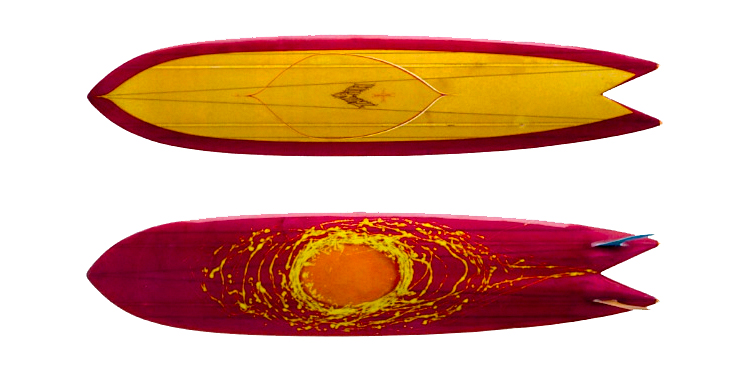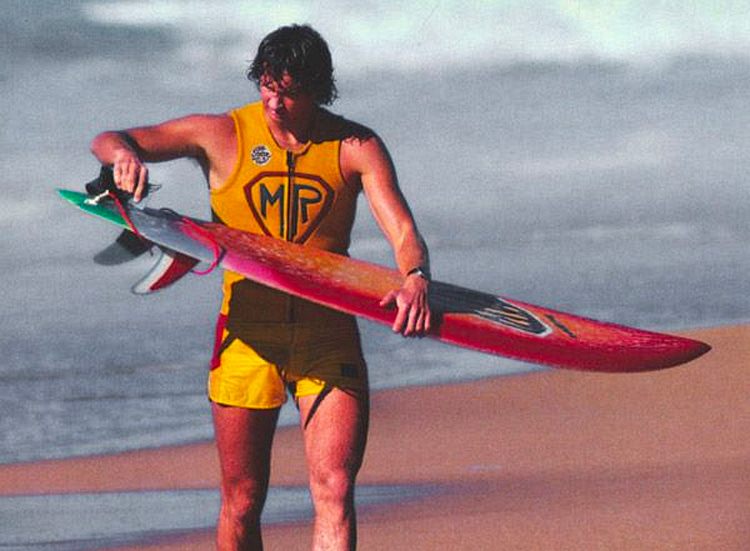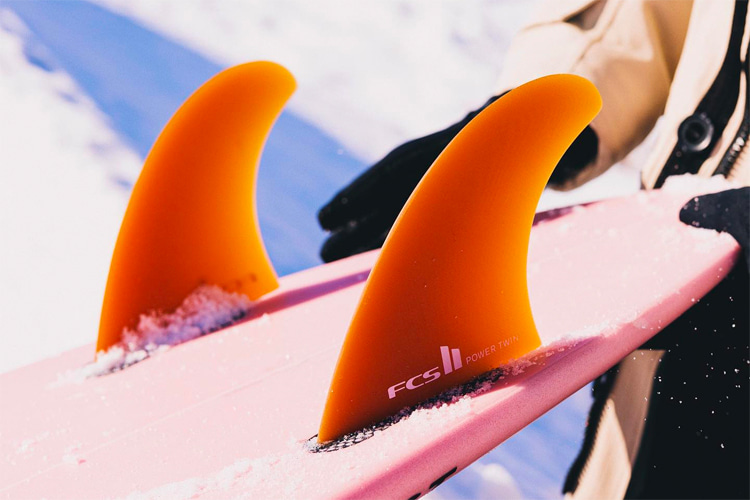The term "twin-fin" refers to surfboards with two fins, although it is often used to describe a particular type of shortboard. Let's dig more into this hybrid concept.
The twin-fin setup has a long history, with California board designer Bob Simmons creating dual fins in the late 1940s and early 1950s.
Simmons was using his preferred "dual fin" design while surfing at Windansea in San Diego when he drowned in a wipeout in 1954.
In 1967, San Diego siblings Nick and Bear Mirandon from Surfboards La Jolla introduced their Twin Pin model, featuring two fins and a split tail, which didn't sell well but inspired the development of the "fish" twin-fin design by Steve Lis.
Kneeboarders first adopted the fish board; then, stand-up surfers followed suit.
At the 1972 World Surfing Championships in San Diego, Jim Blear and David Nuuhiwa finished first and second, respectively, using fish boards.
Additionally, a square-backed and thick twin-fin model was created by Mike Eaton, a California shaper, and then perfected by Geoff McCoy, an Australian.
By 1973, very few stand-up surfers were using any type of twin-fin board.
However, it regained popularity in the late 1970s, thanks in part to world champion surfer Mark Richards.
In 1976, Richards began developing his own high-performance twin-fin model after seeing Hawaiian surfer Reno Abellira use a fish-style board during the Australian competition season.
Richards worked with master shaper Dick Brewer to create his 6'2'' board, which he rode to four world titles from 1979 to 1983.
Other surfers, such as Dane Kealoha and Martin Potter, also excelled on twin fins.
The board's wider planing surface offered more speed than its single-fin predecessor, and its shorter length made it more maneuverable.

The Rise of Thruster
However, the twin-fin was not ideal for midsize or large waves because it was slide-prone and unable to hold a sustained turn.
While tens of thousands of twin-fins were sold worldwide, they were eventually replaced by the tri-fin thruster setup, introduced in 1981 by Australian Simon Anderson.
The system was designed to work in all wave sizes and replaced the twin-fin as the go-to board.
Today, twin fins are mainly produced in small numbers as kneeboards.
However, they remain popular among surfers today due to the unique surfing experience they offer.
The double fin system feels loose and free, allowing for style-oriented high performance and extreme maneuverability in small and big waves.

Twin Fin Surfboard: Pros and Cons
Twin fins offer unique advantages but also come with some downsides. Let's take a quick look at their use, level of difficulty to ride, and speed.
Pros
- Increased Speed: Twin fins tend to be faster than thrusters due to the lack of drag that is caused by the third fin in the thruster setup;
- Improved Maneuverability: The twin fin setup allows for sharper turns and easier maneuverability, especially in smaller waves;
- Retro Style: Twin fins have a retro feel to them that many surfers find appealing;
- Lightweight: The twin fin setup is lighter than the thruster;
- Fun: Twin fins are fun to ride. They offer a unique surfing experience that is different from the standard thruster setup;
Cons
- Reduced Stability: Twin fins lack the stability provided by the center fin in a thruster setup. This makes it more challenging to maintain balance, especially in larger waves;
- Less Control: Twin fins have less control in steep or hollow waves, whereas the third fin in a thruster setup provides pivoting and more stability;
- Limited Use: Twin fins are only ideal for some types of waves. They are best suited for smaller, less powerful waves;
- Not Suitable for Beginners: Twin fins require more experience and skill to ride than the thruster setup. Beginners may find them harder to control and balance;
Double-Edged Sword
Generally speaking, the twin fin setup is limited to small and medium waves, where their increased speed and improved maneuverability can be fully utilized.
Despite their lack of drive, they can plane through dead spots and turn fast in smaller waves while the wide swallow tail stays up and loose out of the water.
They are also great for surfers who enjoy a retro feel to their surfing experience in mushy waves.
The twin-fin setup is generally faster than surfboards with a thruster setup due to the reduced drag caused by the lack of a center fin.
Nevertheless, this is only sometimes the case, as the speed of a surfboard depends on various factors, such as its outline and shape, wave conditions, and the rider's skill.
Twin fins are not ideal for larger, more powerful waves, whereas the third fin in a thruster setup provides greater stability and control.
They can be tough to control in bigger, steeper surf, so they can easily side-slip.
